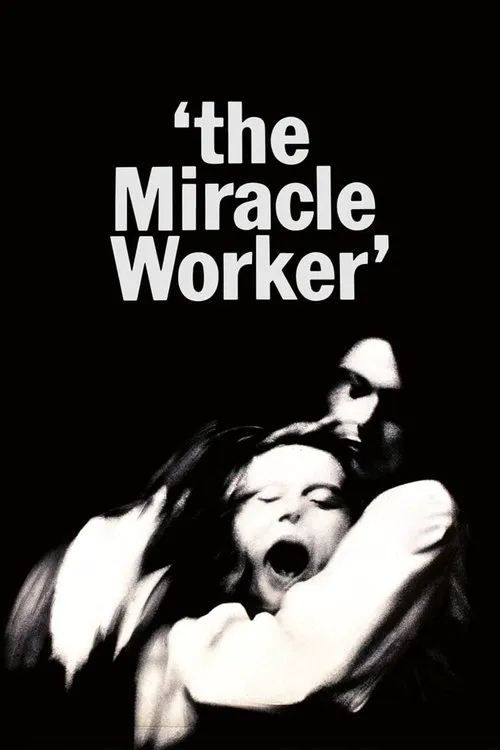The Miracle Worker

Plot
In 1887, the world was a vast and unforgiving place, especially for a young girl like Helen Keller. Born deaf and blind, Helen existed in a realm of silence and darkness, unable to perceive the world around her. Her only sense was touch, which she used to navigate the unfamiliar terrain of her family's estate in Tuscumbia, Alabama. Despite her family's love and devotion, Helen's world was a lonely one, devoid of the simplest joys and connections that most children took for granted. Helen's parents, Kate and Arthur Keller, were desperate for a solution to their daughter's condition. They believed that education and proper training could help Helen overcome her handicaps and live a more fulfilling life. However, as her first teachers struggled to connect with the uncommunicative child, it became clear that a new approach was needed. That's when Annie Sullivan, a young and ambitious teacher from Boston, arrived on the scene. Annie, just 20 years old, had experienced her own share of challenges. After losing her sight at the age of 14, she had spent six years in a brutal school for the blind in Massachusetts, where she was often subjected to harsh discipline and ridicule. In 1886, a miracle had occurred – Annie's sight had been partially restored. With her newfound vision, she had quickly become a voracious learner, devouring books and seeking out new opportunities. Now, she had set her sights on teaching Helen Keller, a pupil who seemed to embody all the challenges and failures of her own past. When Annie first met Helen, the girl was a force to be reckoned with. She was strong-willed, fiercely independent, and utterly resistant to the conventional methods of teaching that her previous instructors had tried. Annie, however, saw something in Helen that no one else did – a spark of potential, a glimmer of intelligence that lay just beneath the surface. She was determined to unlock this potential, no matter what it took. Annie's approach was uncompromising, to say the least. She was convinced that Helen's only hope lay in manual signing, a system of hand gestures and finger spelling that would allow her to communicate with the world. The method had been developed by Thomas Hopkins Gallaudet, the founder of the American School for the Deaf in Hartford, Connecticut. Despite its limitations, Annie was convinced that manual signing was the key to Helen's future. As Annie set about teaching Helen, the two girls embarked on a journey that would change both their lives forever. At first, the results were mixed. Helen was resistant to Annie's methods, and the teacher's patience was frequently tested. However, Annie refused to give up, drawing on every ounce of her own resolve and determination. And Helen, sensing the unwavering commitment of her teacher, began to respond. Slowly but surely, Helen began to grasp the manual signs that Annie was teaching her. It started with simple gestures – "water" and "milk" and "food" – but soon expanded to more complex words and phrases. As Helen's vocabulary grew, so did her understanding of the world around her. She began to grasp the concept of cause and effect, understanding that her actions had consequences and that her teachers were there to guide her. But Annie's greatest breakthrough came when she connected Helen to her inner self. One day, as they sat in the garden, Annie began to spell out the name of Helen's favorite flower, the violet. As her fingers touched Helen's hand, something miraculous happened – Helen's face lit up with recognition and joy. It was a moment of connection, of true communication, that would change everything for both teacher and pupil. Over the next several years, Helen's progress was nothing short of miraculous. She learned to read and write, to speak and to communicate with the world in ways she never thought possible. And through it all, Annie remained by her side, guiding and supporting her every step of the way. The bond between the two girls deepened, until they became more like sisters than teacher and pupil. As the years went by, Helen Keller went on to become one of the most remarkable women of the 20th century. She graduated from Radcliffe College, became a renowned author and advocate for the blind, and traveled the world, spreading her message of hope and empowerment. But she never forgot the one person who had made it all possible – Annie Sullivan, the fierce and dedicated teacher who had shown her that even the darkest and most troubled soul could be transformed by the power of love and connection.
Reviews
Recommendations




